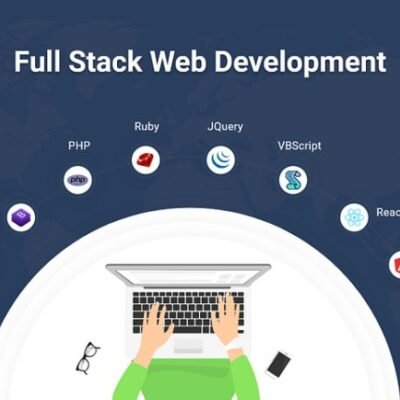Emerging technologies are continuously shaping the world we live in, revolutionizing industries, and transforming the way we interact with the world around us. From Artificial Intelligence (AI) to Quantum computing, these technologies hold immense potential to change the world as we know it. In this article, we will explore 10 emerging technologies that are set to make a significant impact on our future.
Artificial Intelligence (AI) and its potential for transformation
Artificial Intelligence (AI) is one of the most promising emerging technology update that has the potential to transform various aspects of our lives. AI refers to the development of computer systems that can perform tasks that typically require human intelligence, such as visual perception, speech recognition, and decision-making. With advancements in machine learning, deep learning, and natural language processing, AI is being integrated into various industries, including healthcare, finance, transportation, and more.
AI has the potential to revolutionize healthcare by enabling personalized medicine, predictive diagnostics, and telemedicine. It can also improve the efficiency of industries by automating repetitive tasks, optimizing supply chains, and enhancing customer experiences. However, there are ethical concerns surrounding AI, such as bias, privacy, and accountability, that need to be addressed to ensure responsible and ethical development and deployment of AI technologies.
Internet of Things (IoT) and its implications for connectivity
The Internet of Things (IoT) is another rapidly emerging technology that is changing the world we live in. IoT refers to the network of interconnected devices that communicate and exchange data with each other over the internet. This includes everyday objects such as smart appliances, wearables, vehicles, and industrial equipment, which are embedded with sensors, software, and connectivity capabilities.
IoT has the potential to improve efficiency, convenience, and safety in various industries, including smart cities, transportation, agriculture, and healthcare. For example, smart city initiatives can use IoT to optimize traffic flow, reduce energy consumption, and enhance public safety. In healthcare, IoT can enable remote patient monitoring, telehealth, and personalized medicine. However, there are concerns about data security, privacy, and interoperability that need to be addressed to realize the full potential of IoT.
Blockchain technology and its potential for disrupting industries
Blockchain technology is a distributed ledger system that allows secure and transparent transactions without the need for intermediaries. It has gained significant attention due to its potential for disrupting industries such as finance, supply chain management, and digital identity verification.
Blockchain has the potential to revolutionize the financial industry by enabling faster and cheaper cross-border transactions, reducing fraud, and increasing transparency. It can also transform supply chain management by improving traceability, visibility, and accountability. Moreover, blockchain can enhance digital identity verification by providing a decentralized and secure system for managing personal information.
Quantum computing and its impact on computing power
Quantum computing is a cutting-edge technology that utilizes the principles of quantum mechanics to perform calculations that are not possible with traditional computers. Quantum computers use quantum bits or qubits, which can exist in multiple states simultaneously, allowing for parallel processing and significantly higher computing power compared to classical computers.
Quantum computing has the potential to revolutionize various fields, including drug discovery, financial modeling, weather forecasting, and cryptography. It can enable faster and more accurate simulations, optimization algorithms, and data analysis, leading to breakthroughs in scientific research and technological advancements. However, quantum computing is still in its early stages of development, and there are challenges such as error correction and scalability that need to be overcome for its widespread adoption.
Augmented Reality (AR) and Virtual Reality (VR) and their applications
Augmented Reality (AR) and Virtual Reality (VR) are emerging technologies that are changing the way we experience and interact with the digital world. AR overlays virtual objects onto the real world, while VR creates a fully immersive virtual environment.
AR and VR have applications in various industries, including gaming, education, healthcare, and training. In gaming, AR and VR can provide interactive and immersive experiences, blurring the line between the virtual and real world. In education, AR and VR can enhance learning by providing virtual simulations and immersive educational content. In healthcare, AR and VR can be used for surgical training, therapy, and rehabilitation. However, there are challenges such as hardware limitations, content creation, and user experience that need to be addressed for the wider adoption of AR and VR technologies.
3D printing and its potential for revolutionizing manufacturing
3D printing, also known as additive manufacturing, is a technology that allows for the creation of three-dimensional objects by layering materials on top of each other. 3D printing has the potential to revolutionize manufacturing by enabling faster, more flexible, and cost-effective production processes.
3D printing has applications in various industries, including aerospace, automotive, healthcare, and consumer goods. In aerospace, 3D printing can reduce the weight of parts, lower production costs, and enable complex geometries. In healthcare, 3D printing can be used for personalized medical implants, prosthetics, and drug delivery systems. In consumer goods, 3D printing can enable customized products and reduce waste. However, there are challenges such as material limitations, scalability, and intellectual property concerns that need to be addressed for the wider adoption of 3D printing in manufacturing.
Gene editing and its ethical implications
Gene editing, specifically Clustered Regularly Interspaced Short Palindromic Repeats (CRISPR) technology, is a powerful tool that allows for precise modification of genes in living organisms. Gene editing has the potential to revolutionize fields such as agriculture, medicine, and biotechnology, but it also raises ethical concerns.
Gene editing can have positive impacts, such as improving crop yields, eradicating diseases caused by genetic mutations, and curing genetic disorders. However, there are ethical concerns related to the potential misuse of gene editing, including ethical implications of altering the human germline, potential unintended consequences, and equitable access to gene editing technologies. Responsible and ethical use of gene editing technologies is crucial to ensure that the potential benefits are realized while avoiding any negative impacts.
Biotechnology and its potential for advancing healthcare
Biotechnology is an interdisciplinary field that uses living organisms, biological systems, and their derivatives to develop new products, technologies, and therapies. Biotechnology has the potential to advance healthcare by enabling the development of personalized medicines, gene therapies, and regenerative medicine.
Biotechnology has applications in various areas of healthcare, including drug discovery, diagnostics, and therapeutics. It can enable the development of targeted therapies based on individual genetic makeup, leading to more effective treatments with fewer side effects. Biotechnology can also revolutionize diagnostics by providing faster and more accurate tests for diseases. However, there are





